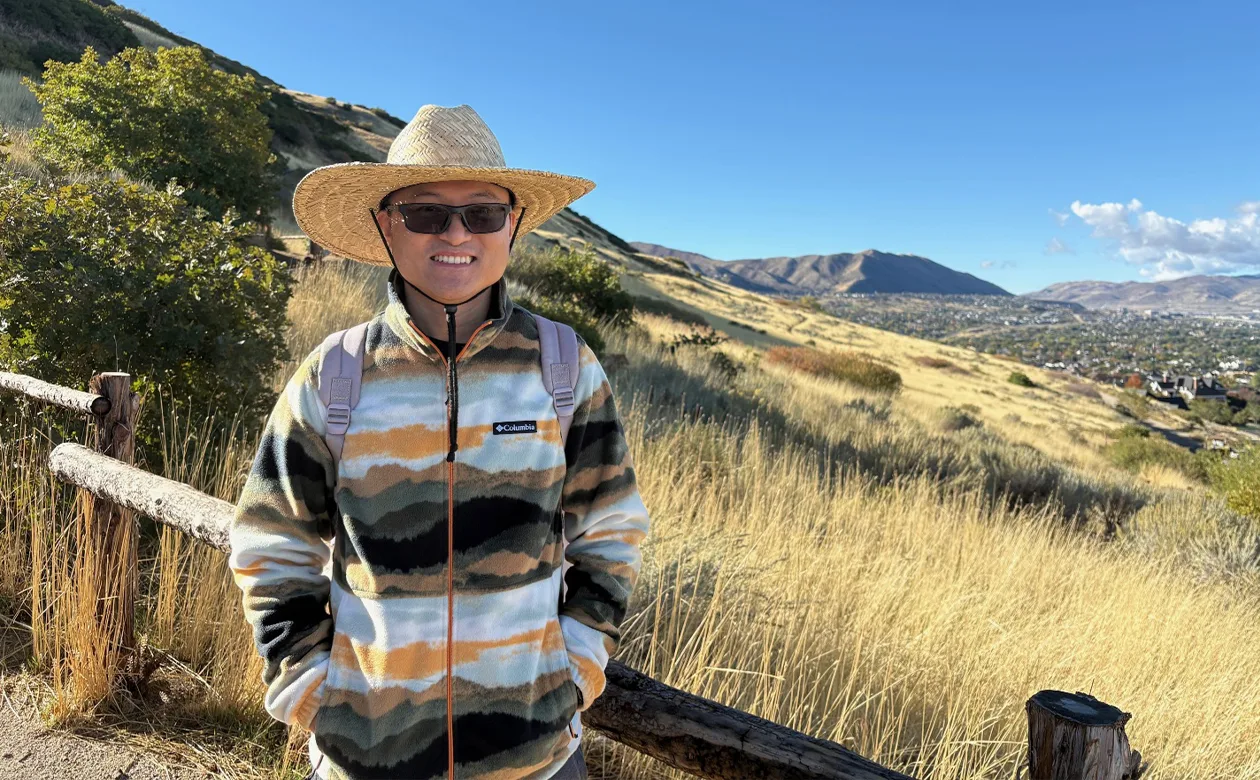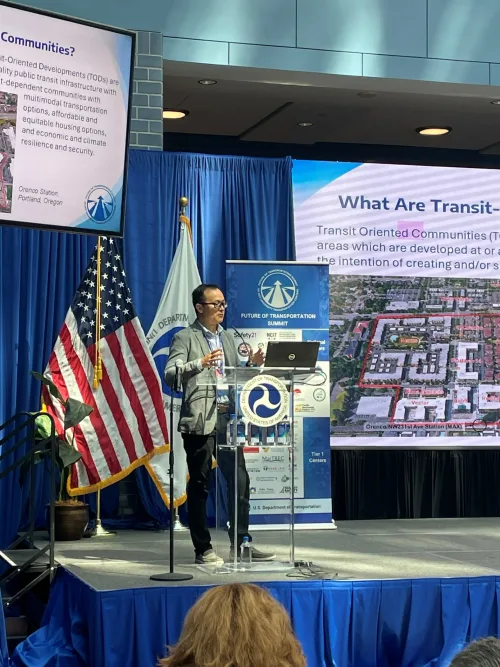
For Guang Tian, a new assistant professor at the University of Utah’s Scientific Computing and Imaging (SCI) Institute, getting stuck in traffic has a silver lining: it might inspire his next project. As SCI’s first faculty member from the City and Metropolitan Planning Department, Tian is pioneering research that blends advanced technology with urban design to promote communities that are healthier, better connected, and more sustainable.
His return to the U is a homecoming: after earning his PhD and completing a postdoc here, Tian spent nearly eight years at the University of New Orleans, where he founded the Center for Transit-Oriented Communities, a U.S. Department of Transportation–designated University Transportation Center. Now back in Utah, Tian talks about how the U shaped him, why urban planning matters for quality of life, and how SCI is already helping him spark interdisciplinary, data-driven collaborations.

What’s your primary research area?
My research focuses on promoting cities that are efficient, healthy, sustainable, and affordable for all, while harmoniously integrating with the Earth’s ecosystem. I analyze data to discover historical patterns and current trends, and I explore future scenarios through modeling and forecasting.
Why is your research important?
Many cities today are built in ways that make driving almost unavoidable, which leads to wasted time in traffic, higher emissions and pollution, and fewer physical activities. My research explores how we can design cities to be compact, dense, and mixed-use, with high-quality transit systems that make it easy for people to walk, bike, or take public transportation to work, to school, or to hang out with friends.
These compact, dense, mixed-use, and connected communities not only reduce environmental impacts but also promote healthier lifestyles and more vibrant communities. In fact, research consistently shows that many people actually prefer living in such vibrant and accessible neighborhoods.
What makes you most excited about the work you’re doing?
My research shows that we can make a real difference on big issues through small choices in our daily lives—like carpooling, taking transit, walking, or biking whenever possible. These decisions not only reduce environmental impacts but also promote healthier lifestyles and more vibrant communities.
Utah is growing rapidly—you can feel it every day with more people, more traffic, and expanding cities. Yet we’re also surrounded by some of the most beautiful and fragile natural environments in the country. This gives us a unique opportunity to lead by example and show what future cities can look like—where growth doesn’t come at the expense of nature or quality of life.
I’m excited about contributing to build a future where we can thrive together while protecting the natural landscapes we love.
What does being a part of SCI mean to you?
For me, being part of SCI is all about interdisciplinary collaboration—having the chance to talk with and learn from people outside my field and to think beyond the traditional boundaries of urban planning. It’s exciting to share my research with colleagues from different disciplines and see how their perspectives spark new ideas. In just a few months here, I’ve already started developing a proposal with collaborators from two other areas.
SCI provides an incredible platform for this kind of work, with faculty expertise, resources, and support that make collaboration feel natural. Many SCI faculty specialize in AI, machine learning, data science, and visualization—exactly the kinds of collaborators I’ve been looking for to apply these advanced technologies into urban planning research. Such technologies can help me analyze millions of travel records to discover patterns and identify relationships between travel behaviors and the built environment.
What inspires you in your work?
My education and training at the Department of City and Metropolitan Planning at the U laid the foundation for my work, giving me a deep understanding of how land use, housing, and transportation systems function and what their social, environmental, and economic impacts are.
Equally inspiring are the daily experiences of everyday people. I think about those stuck in traffic, those who don’t feel safe or comfortable walking in their neighborhoods, the struggle to find affordable housing, or the poor air quality during winter. These real-world challenges drive me to conduct research that can make cities healthier and more efficient, sustainable, and livable for everyone.
Why did you become a professor and researcher?
I’ve loved research ever since I was a research assistant in graduate school. I enjoy the process of learning, discovering new things, and finding ways to make positive changes. When I first started my academic career as a professor, I saw myself primarily as a researcher. Over time, however, I realized how deeply fulfilling and impactful teaching can be too, and how much research and teaching enrich one another.
What I enjoy most about being a professor is how research and teaching truly complement each other. Teaching keeps me learning and pushes me to stay current both academically and practically. At the same time, conversations and interactions with students often spark new ideas and perspectives that influence my research in exciting ways.
It’s also incredibly fulfilling to see students grow and succeed, such as going on to graduate school, starting their dream jobs, launching new ventures, etc. Knowing I’ve played even a small role in their journey is one of the best parts of this profession. For me, being a professor means continuously learning, discovering, sharing knowledge, and inspiring next generations. That’s what makes this career so meaningful.
What do you like to do in your free time?
I enjoy sports and outdoor activities and like to stay physically active. I play tennis with colleagues, students, and friends on weekday evenings. On weekends, I enjoy hiking in the mountains, and during the winter months, I love skiing.
